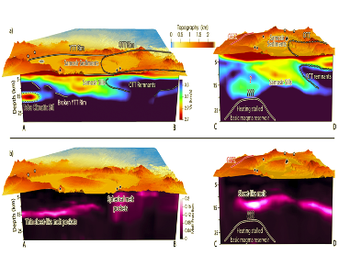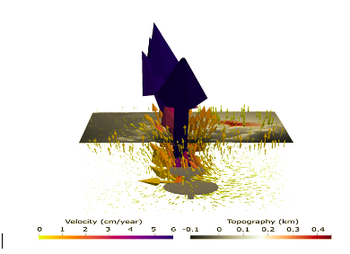Unlike the atmosphere or deep space, “seeing” inside the Solid Earth requires the use of signals that do not rely on the propagation of light. The Earth's elasticity allows seismic waves to travel, providing three-dimensional information about the Earth's structure, from the core to the surface. Electromagnetic fields offer precise insights into the presence and composition of rocks and the fluids that permeate them.
This research area focuses on the development of computational techniques for multiscale geophysical imaging. It involves the use of standard methods, such as seismic tomography, as well as the development of open-access computational tools to exploit non-conventional observables, such as energy loss and ambient noise.
Understanding how the Earth works requires the development of theories and computational techniques capable of explaining the complex processes active underground and the resulting geophysical data. Over the past decade, computational modeling capabilities for these processes have grown significantly, necessitating the formation of research groups capable of working with both complex physical theories and an exponentially increasing volume of recorded data.
This research area focuses on the application of thermomechanical modeling techniques at the lithospheric and mantle scale, enabling the definition of physical processes active in the most complex zones, such as magmatic regions, and quantitatively explaining the data recorded at the surface. The integration of these modeling techniques with expertise in inversion methods across various geophysical fields ideally allows for the reconstruction of the Earth's physical characteristics and its processes.

